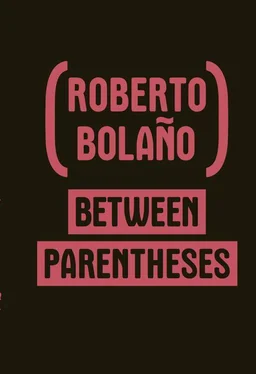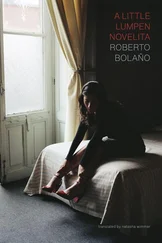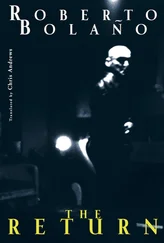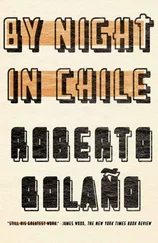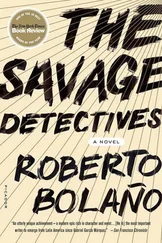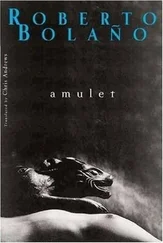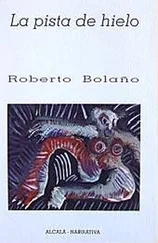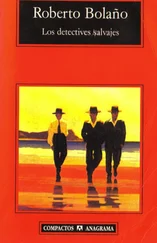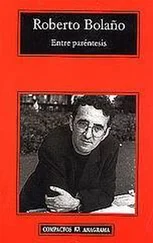Roberto Bolaño - Between Parentheses - Essays, Articles and Speeches, 1998-2003
Здесь есть возможность читать онлайн «Roberto Bolaño - Between Parentheses - Essays, Articles and Speeches, 1998-2003» весь текст электронной книги совершенно бесплатно (целиком полную версию без сокращений). В некоторых случаях можно слушать аудио, скачать через торрент в формате fb2 и присутствует краткое содержание. Год выпуска: 2011, Издательство: New Directions, Жанр: Публицистика, Критика, на английском языке. Описание произведения, (предисловие) а так же отзывы посетителей доступны на портале библиотеки ЛибКат.
- Название:Between Parentheses: Essays, Articles and Speeches, 1998-2003
- Автор:
- Издательство:New Directions
- Жанр:
- Год:2011
- ISBN:нет данных
- Рейтинг книги:4 / 5. Голосов: 1
-
Избранное:Добавить в избранное
- Отзывы:
-
Ваша оценка:
- 80
- 1
- 2
- 3
- 4
- 5
Between Parentheses: Essays, Articles and Speeches, 1998-2003: краткое содержание, описание и аннотация
Предлагаем к чтению аннотацию, описание, краткое содержание или предисловие (зависит от того, что написал сам автор книги «Between Parentheses: Essays, Articles and Speeches, 1998-2003»). Если вы не нашли необходимую информацию о книге — напишите в комментариях, мы постараемся отыскать её.
The Savage Detectives
Between Parenthese
Between Parentheses: Essays, Articles and Speeches, 1998-2003 — читать онлайн бесплатно полную книгу (весь текст) целиком
Ниже представлен текст книги, разбитый по страницам. Система сохранения места последней прочитанной страницы, позволяет с удобством читать онлайн бесплатно книгу «Between Parentheses: Essays, Articles and Speeches, 1998-2003», без необходимости каждый раз заново искать на чём Вы остановились. Поставьте закладку, и сможете в любой момент перейти на страницу, на которой закончили чтение.
Интервал:
Закладка:
The next day, Roberto specifies: “I’d like to have a column where I can talk about everything from the most obscure Provençal poet to the most celebrated Polish novelist, which will all sound like the same gibberish in Santiago. The truth is, these pieces will be collected into a book at some point, and that’s why I want to get in the ones that were already published in Catalan. To be perfectly clear: this would be an essentially literary column.”
Andrés Braithwaite accepted Bolaño’s proposal, and the two immediately began trying to come up with a good title for the column. “I think it should have a title,” says Bolaño, and he suggests, tongue in cheek: “HELLO, GOD SPEAKING? THUS SPAKE ZARATHUSTRA? THE ORACLE OF DELPHI? THE DIVINE SCOURGE?… I’m joking. I repeat: joking. The truth is I can’t come up with anything. page gues is a bad title, but that’s the idea. Or: NOTES. Something along those lines.” The matter was resolved after some back and forth around a list of suggestions sent by Braithwaite that caused Bolaño “considerable amusement.” Among them was “Between Parentheses,” which they both liked.
As this demonstrates, the idea of collecting Bolaño’s newspaper columns in a book was very much a part of his own plans. The long section into which they’re gathered is divided into three parts. I) In the first are the pieces that Bolaño didn’t reclaim for his column in Las Últimas Noticias . Not all are included, since, as noted, the Spanish originals of some couldn’t be found. II) The columns in the second part were all published in Las Últimas Noticias but many were previously published in the Diari de Girona . III) As for the pieces in the third part, almost all were originally published in Las Últimas Noticias .
In the case of the columns that were first published in the Diari de Girona and then in Las Últimas Noticias (about twenty), it was decided to follow the sequence that Bolaño established for the Chilean newspaper. This makes sense considering the greater care that Bolaño seems to have taken in his second stint as a columnist, when he was beginning to be a well-known writer and to contemplate the possibility of collecting his journalistic writings in a book. In any case, it’s important to stress the periodic nature of the columns gathered in this section, written at weekly or bi-weekly intervals, all more or less similar in length and linked to one another in the manner of diary entries, in which the author expresses his likes, loves, infatuations, and obsessions.
The next section, titled “Scenes,” collects some travel articles and other occasional pieces whose common denominator is the evocation of places that were familiar to Bolaño, or that he visited occasionally. The Catalan town of Blanes, a strong presence in a number of Bolaño’s columns, naturally takes center stage. Bolaño always felt very comfortable in this seaside town, which he encountered for the first time — as he explains in “Town Crier of Blanes” — in Últimas tardes con Teresa [Last Evenings with Teresa], the novel by Juan Marsé, which he read avidly while he was still living in Mexico. The Blanes beach, meanwhile, is the setting for “Beach,” a purely fictional piece that might have been included in any of Bolaño’s story collections.
In this regard, it should be stressed that Bolaño’s books, from very early on, displayed a marked tendency to flow easily from one genre to another. In his last two “story” collections, this translated into the grouping together, without any sort of distinction, of texts of very different types. In the collection Putas asesinas [Killer Whores] (2001), a piece like “Dance Card” already has an unequivocally autobiographical slant. And in the collection El gaucho insufrible Bolaño planned to include what were originally two talks or speeches that, as we’ve seen, bear a clear resemblance to those included in the first section of this book. At the start of El gaucho insufrible , too, comes “Jim,” which Bolaño originally wrote as a column for Las Últimas Noticias and which the reader will find here again, so that it remains part of the series to which it first belonged. Like so many of the other pieces gathered here, “Jim” is ambiguous in nature, midway between autobiographical sketch and fiction. Meanwhile, “Beach,” whose narrator is an ex-junkie, belongs fully to the genre of fiction, though it clearly has its origins in another column by Bolaño: “Sun and Skull,” first published in the Diari de Girona , in 1999, and republished a year later, with slight modifications, in Las Últimas Noticias . All of which leads to the conclusion that this book sits naturally alongside the books that Bolaño himself published before his death, making it possible to speculate that, far from trying to conceal its very miscellaneous character, Bolaño himself would have underscored it, assigning the book to the same category as Putas asesinas and El gaucho insufrible .
The fifth section deals entirely with writers and books. Again, these are occasional pieces, written on assignment, mostly prefaces and the odd review, as well as a few stray obituaries (like Camilo José Cela’s) and pieces written to celebrate the publication of a book (like “Notes on Jaime Bayly”). At the end comes what is certainly one of Bolaño’s last pieces, “Sevilla Kills Me,” a fragment of an unfinished speech that he planned to read at the first Encuentro de Escritores Latinoamericanos [Conference of Latin American Writers], organized by the publishing house Seix Barral and held in Sevilla in June 2003. Bolaño traveled to Sevilla without having finished the speech, reading instead “Los mitos de Cthulhu,” which was already written. It’s clear that if finished, “Sevilla Kills Me” would join the company of the “insufferable speeches.” Its content, in any case, makes plain the context in which one must view the back-slaps and knuckle-raps, the winks and cuffs that Bolaño deals his contemporaries, particularly the young Latin American writers who, justifiably or not, constantly cite him as an influence.
“The Private Life of a Novelist,” the last of the sections into which this volume is divided, consists of four short pieces in which Bolaño recalls his education as a reader and reflects on his “literary kitchen,” permitting himself to offer some “advice on the art of writing stories” and providing some clues to The Savage Detectives .
The book ends with one of the last interviews that Bolaño gave, if not the last. The interview was conducted by Mónica Maristain, for the Mexican edition of Playboy , and it came out on the day he died. Bolaño sent written answers, and claimed he’d had fun with it. The result is a kind of sketch, for which Bolaño posed with characteristic openness and irony.
In putting together this book, it was necessary to overcome some scruples about doing so without the express consent of the writer. But, as we’ve seen, Bolaño himself more than once announced his intention of preparing a collection of his journalistic pieces, which provides an initial alibi for proceeding in his stead. There’s room nevertheless, for reasonable doubt as to which pieces Bolaño might or might not have decided to include, what his selection criteria might have been, and how he might have ordered the pieces. In these matters there’s no guidance to be had, so an attempt has been made to proceed as neutrally as possible, without relinquishing minimal standards of organization. There has been no “censorship,” nor were any pieces automatically ruled out (with the exception, previously noted, of those published in Catalan that couldn’t be located in the original version). Another matter are the undiscovered pieces that will doubtless surface here and there once this volume has been published. There are unlikely to be many of them. In any case, this volume isn’t defined by its zeal for exhaustiveness, particularly since it was decided at the outset not to reprint a number of very old pieces, published during the years when Bolaño lived in Mexico. To include them in this volume would have meant disrupting the notable harmony of the elements of which it is presently composed. Also, there was some hurry to get these pieces into readers’ hands. This haste was motivated by a wish that they be read while the memory of the writer was still fresh, and as I write these lines, a year has not yet passed since his death.
Читать дальшеИнтервал:
Закладка:
Похожие книги на «Between Parentheses: Essays, Articles and Speeches, 1998-2003»
Представляем Вашему вниманию похожие книги на «Between Parentheses: Essays, Articles and Speeches, 1998-2003» списком для выбора. Мы отобрали схожую по названию и смыслу литературу в надежде предоставить читателям больше вариантов отыскать новые, интересные, ещё непрочитанные произведения.
Обсуждение, отзывы о книге «Between Parentheses: Essays, Articles and Speeches, 1998-2003» и просто собственные мнения читателей. Оставьте ваши комментарии, напишите, что Вы думаете о произведении, его смысле или главных героях. Укажите что конкретно понравилось, а что нет, и почему Вы так считаете.
